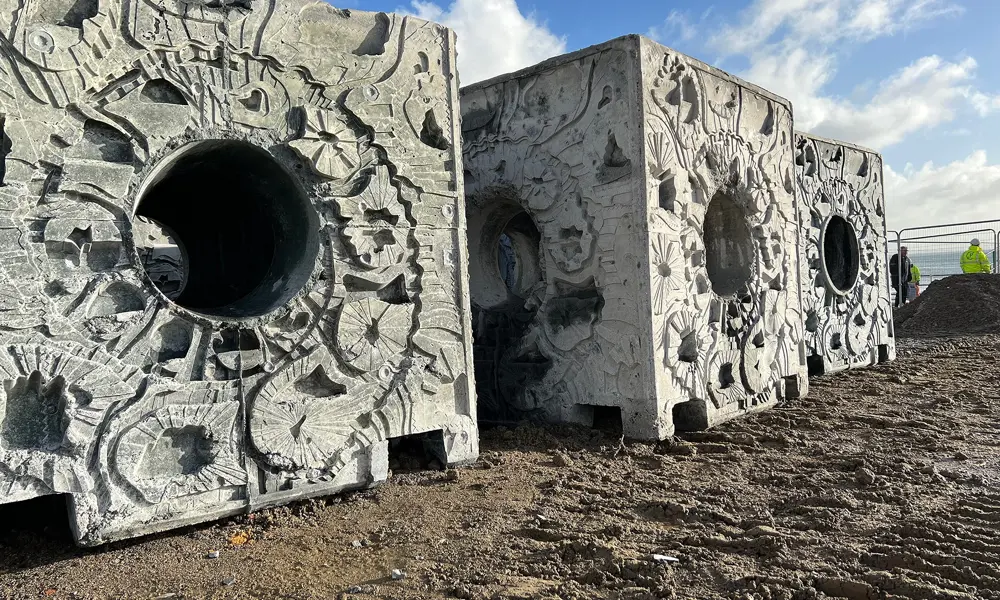
How artificial reefs boost biodiversity
Did you know?
🐠 Reefs – not just made from coral
- Coral reef structures can buffer shorelines against 97% of the energy from waves, storms and floods
- Marine life can make a home in places as diverse as bamboo structures, sunken warships and old train carriages
- Engineers are investigating new materials for artificial reefs, to minimise carbon emissions and avoid plastics
Coral reefs are among the most diverse and valuable ecosystems on Earth. And yet, they are vulnerable to mass bleaching due to warming seas and ocean acidification, as well as pollution, overfishing and destructive fishing practices. Once living coral is weakened or broken, sea storms and changing water chemistry erode the calcium carbonate skeletons on which reef life attaches itself. Both tropical and cold-water coral reefs have been affected globally.
Alongside reef destruction is coastal erosion. This happens naturally, but climate change and human interference have resulted in increasingly retreating coastlines and beaches. Coral reef structures can buffer shorelines against 97% of the energy from waves, storms and floods, to help prevent erosion and damage to property and life. Reef conservation, research and restoration is of paramount importance.
As a response to these crises, engineers are creating artificial reef structures (ARS), which are deliberately placed in the sea to reproduce some aspects of a natural reef.
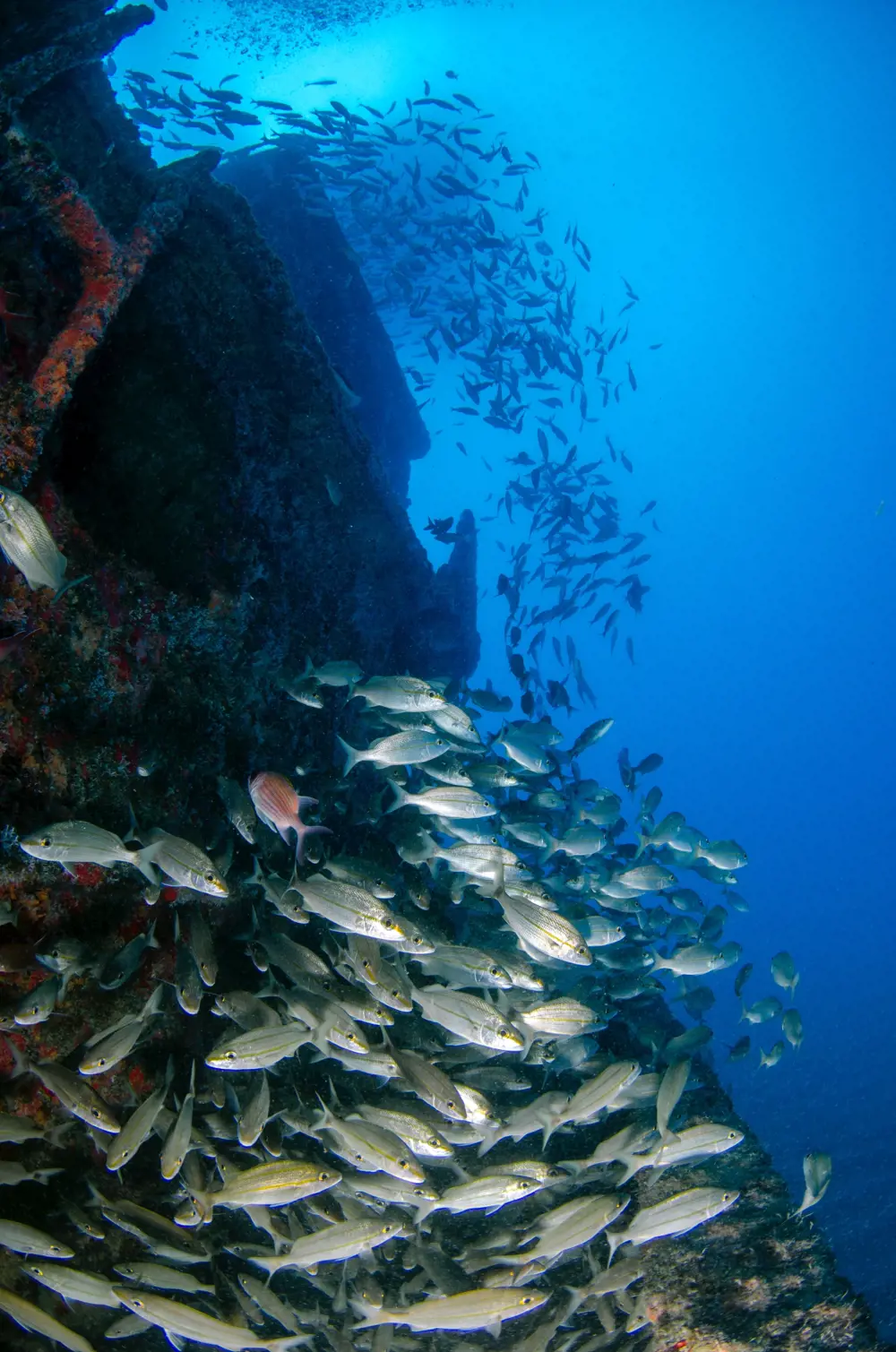
Bamboo, warships and old tyres
ARS are not new. The first intentional structures date back to at least 18th-century Japan, when structures made from bamboo and leaves were sunk to increase fish yield and for algaculture. Later, ships sunk during the First World War and Second World War became ‘accidental’, but efficient, artificial reefs. As it transpired, thick, heavy-gauge steel, sufficiently corroded by seawater, could provide a suitable texture for coral attachment. Old boats, train carriages and cars, when sunk, were also considered workable solutions – if they were stable, non-toxic and provided a suitable surface for marine organisms to latch on to.
However, the business of devising ARS has not been without its disasters. Take the 1970s’ Osborne reef project in Florida. This involved dumping a mass of two million old tyres, linked with metal clips, onto the seabed, to bolster existing reefs while disposing of old tyres from Goodyear and landfill. While it may not sound like it by today’s standards, it was created with the best intentions: an idea from a non-profit group, endorsed by the US Army Corps of Engineers and following similar projects in the northeast and Gulf of Mexico. But it soon began to fail. The clips connecting the tyres corroded and parts broke loose, damaging nearby natural reefs. Strong tides, hurricanes and tropical storms moved tyres thousands of miles. By the 2000s, the project was considered an environmental disaster. Studies showed it was leaching toxic chemicals – and almost no fish were living in the area. A cleanup operation was launched, but even as of 2019, only 250,000 tyres had been collected.
Thankfully, the tide, and awareness, is turning against such eco-malpractice. The focus today has shifted significantly to ensuring ARS are environmentally friendly, and preserve and encourage biodiversity.
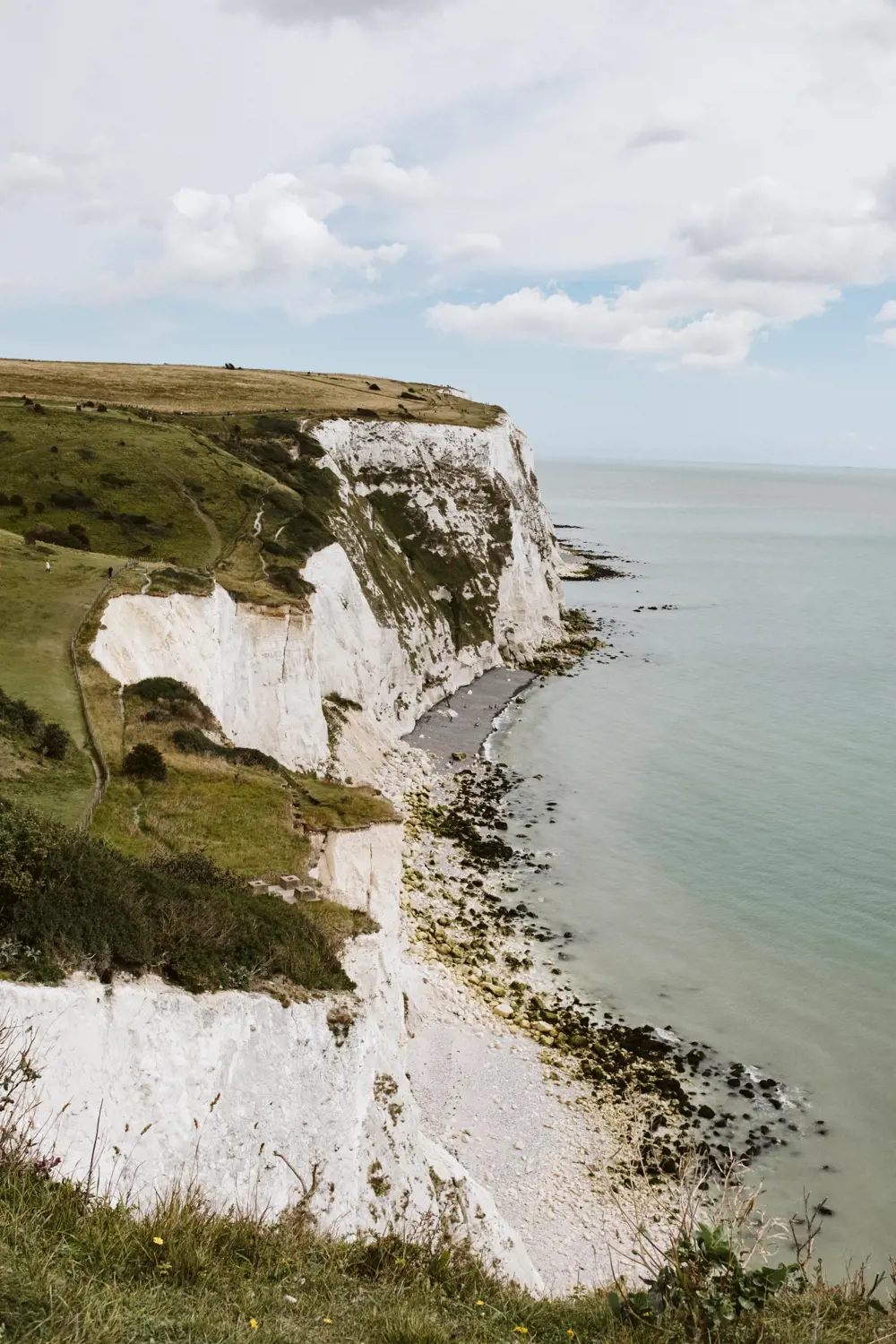
© Peter Mason / Unsplash
An electric solution
CCell is a UK set-up, whose motto is ‘building reefs to combat coastal erosion in harmony with nature’. Dr Will Bateman, its CEO and Founder, is a civil and environmental engineer, whose PhD from Imperial College London was on modelling extreme ocean waves. Back in 2015, Bateman, a keen diver, was in Playa del Carmen in Mexico, when he noticed sandbags outside a beachside hotel that was part of a large international chain. “They were trying to stop the waves, which were coming in close to the hotel’s foundations,” he says. He later discovered that about 30 to 50 metres of the beach had been lost between 2017 and 2019.
Coastal erosion is not new, he asserts. “You could argue the White Cliffs of Dover are white owing to perpetual coastal erosion.” However, he says because of climate change, many areas have seen long term wave characteristics – also called ‘wave climate’ – growing more intense over the past 80 years. He flags a 2019 study on wave climate, showing that global wave power increased by 0.41% each year. “Accumulating over 20 to 30 years, it has quite an impact,” he says. Furthermore, “studies show a noticeable shift in the past 10 years, and erosion rates have become far more aggressive.”
Bateman switched CCell’s focus to combating coastal erosion. “Coral reefs are natural barriers to erosion, causing waves to break at sea,” he says. The company’s goal became one of replicating natural reefs. In doing so, they would create a habitat for marine life, while returning beaches to their former states.
Typical solutions to coastal erosion include ‘hard’ solutions, which have not changed since Roman times, involving taking “the largest rocks or concrete units you can lift” and piling these up along the shore. Another option, beach replenishment, “is a sticking plaster approach that involves pumping sand back onto the beach,” says Bateman. More recent ‘soft’ solutions include large sandbags that break down after three to five years, causing further damage with plastic pollution.
Coral reefs are natural barriers to erosion, causing waves to break at sea... The goal is to create a submerged unit that affects the waves at the surface, akin to most coral reefs.
Will Bateman, CEO and Founder of CCell
CCell’s challenge was to create a reef that could be efficiently made and easy to transport. The company devised a system that could be installed with just two workers, without the need for large boats or cranes. The lightweight, modular steel units are typically 2.5 metres long and up to 3 metres high. They can be stacked for transport “like supermarket trolleys” and the design adjusted for water depth. “The goal is to create a submerged unit that affects the waves at the surface, akin to most coral reefs.” This means the reefs themselves don’t have to resist the high loads that arise in the surface of the wave, especially breaking waves.
The engineers use seawater electrolysis to grow the rock on the steel reefs, an approach known as an electrified reef. To do this, a safe, low-voltage current is applied to the reef, controlled via a digital management system. As the current flows, oxygen, which is beneficial for marine life, is produced at the anode. Meanwhile, the pH rises at the cathode (the main structure). This precipitates minerals dissolved in seawater to form rock, which provides the structure with the necessary bulk to affect the wave climate.
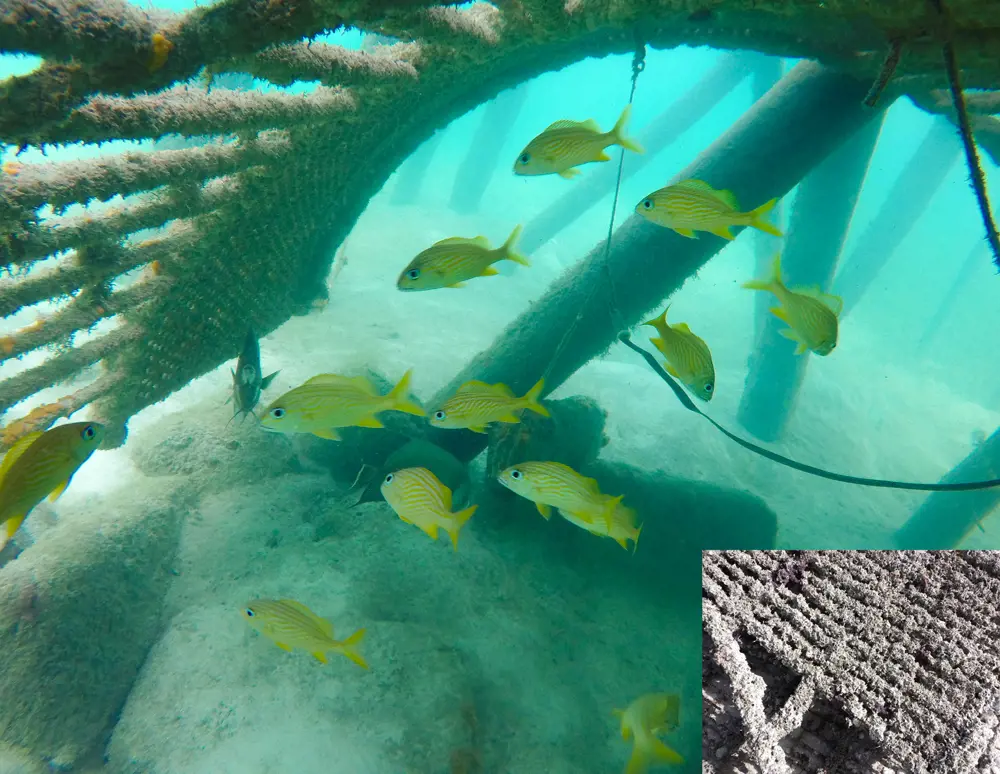
One of CCell’s artificial reefs in action. Inset: a close-up of one of their reefs, populated with barnacles © CCell
“The rock, mainly calcium carbonate and magnesium hydroxide, grows at about 18 millimetres per year and will heal if damaged,” says Bateman. He describes it as “the perfect medium on which to put oysters or corals.” The company is also working with marine biologists to plant carbon-capturing, wildlife-supporting seagrass in and around the reef structures.
What evidence have they seen that ARS can support biodiversity and marine life? CCell is waiting for results from four pilot installations at global sites. The team is monitoring a beach in Telchac, Mexico, where “visually there’s been an improvement of two metres…. We’ve also been blown away by the increase of fish numbers.”
A CCell reef costs $1,000 to $5,000 per metre, depending on the site. The company has won contracts with hotels and high-end property owners, and partnerships with marine engineering companies in Mexico, India and Europe.
These first pilots at hotel beaches are just the beginning: one of CCell’s next projects involves building an artificial reef at a £100 million yacht marina on the Isle of Man. “CCell has been commissioned to ensure the development is as ecologically sensitive as possible,” a spokesperson for the firm Ramsay Marina Ltd told BBC News. It is trialling the technology at the island’s Douglas Harbour to provide scour protection for the marina’s walls, all the while giving the ecosystem a boost.
The ideal artificial reef
According to Dr Will Bateman of CCell: “A good reef is one that as closely as possible mimics natural reefs (coral or oyster reefs). CCell’s reefs are designed to attenuate ocean waves and promote marine life, with our focus toward the creation of robust structures formed from natural minerals found in seawater on which corals, oysters and fish can thrive.” He adds: “A bad reef is anything made from unnatural materials.”
Sam Hickling of ARC Marine says: “The shape and surface texture of concrete appears to be the most decisive factor. We prefer to use materials that are low carbon so we use an alkali-activated material, which doesn’t appear to have any negative effects on the results after a year. It seems a shame to build artificial reefs out of anything with cement-based concrete because the carbon footprint would negate the biodiversity benefits somewhat.”
Looking to the North Sea
Elsewhere around the shores of the UK, a very different type of artificial reef is being explored. Like CCell’s structures, they are being used for coastal defence, although they resemble the conventional ‘hard’ solutions. But they have another vital application – to protect offshore structures crucial for a net zero future, from wind turbine foundations to undersea power cables.
The precedent for these cold-water ARS was set by the Loch Linnhe Reef project in Scotland. The seven-year multidisciplinary project was Europe’s largest ARS when it began in 2000. “ARS can enhance local-scale biodiversity, but only where they offer a new habitat for marine life,” says Dr Tom Wilding, a seafloor ecologist who worked on the project. He says this is seen, to some extent, on the Loch Linnhe Artificial Reef, “as it is located over a range of sediment types.”
The main reef complex at Loch Linnhe consists of five groups of six individual reef modules deployed in water between 12 and 30 metres deep. Each reef module consists of 4,000 concrete blocks. Along with obtaining the necessary licences and permissions, primarily from Marine Scotland, one of the biggest challenges for the project was determining the optimal manufacturing and construction approach. After settling on concrete blocks, the reef cost £1 million, including licensing, research costs, manufacturing, and installation.
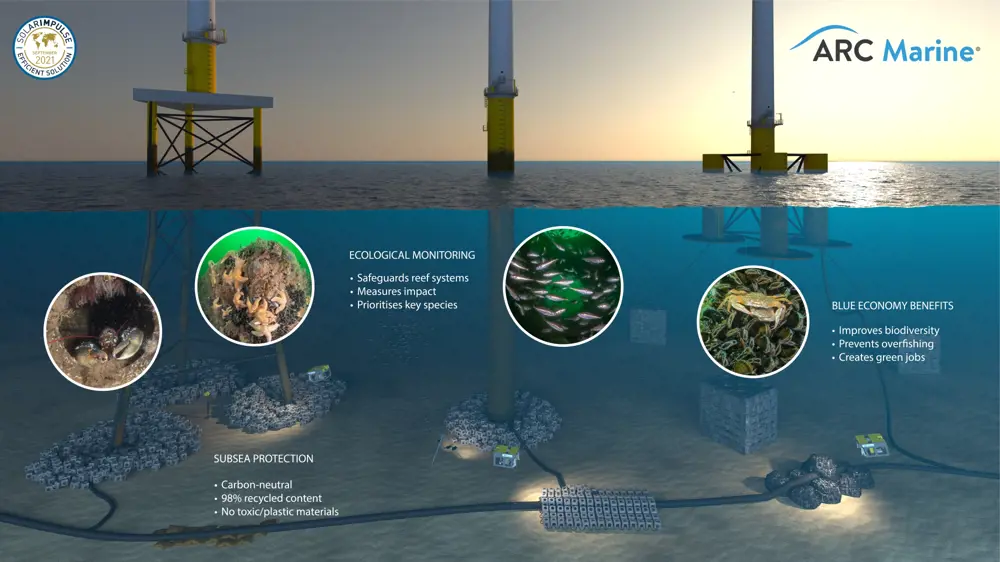
Different types of artificial reefs can be used to protect a variety of offshore infrastructure, from mattresses for subsea power cables, to blocks for wind turbine monopiles © ARC Marine
However, concrete is not known for its environmental credentials. In the hopes of finding a greener alternative, ARC Marine was launched in 2015 by CEO and Founder Tom Birbeck. Birbeck’s background is not in engineering, but documentary research. A keen diver, like Bateman, he was looking for subjects to film. On one dive he was shocked to witness “shoddy concrete being used to protect subsea assets and harbour walls. I thought we could make much better concrete for reef material.”
Birbeck set up ARC Marine, in Torquay, Devon. Collaborating with the universities of Plymouth and Exeter, the team created reef cubes®. Made from Marine Crete, an alkali-activated low-carbon alternative to concrete based on ordinary Portland cement, the award-winning cubes each weigh about 5.5 tonnes and can be placed from the high intertidal mark to the subsea, depending on requirements. They are a low-carbon, plastic-free solution for coastal defence, subsea protection and marine habitat restoration.
“Rock armour requires a lot of carbon to transport, and produces a lot of waste,” says Birbeck. He explains that it is blasted from Scandinavian quarries using explosives – also necessitating transport over large distances. “By contrast, our bespoke units can be made close to site and are engineered and designed to what’s needed.”
The main idea to incorporate into the design of an effective artificial reef is the complexity of the habitat.
Sam Hickling, ARC Marine's Chief Scientific Officer
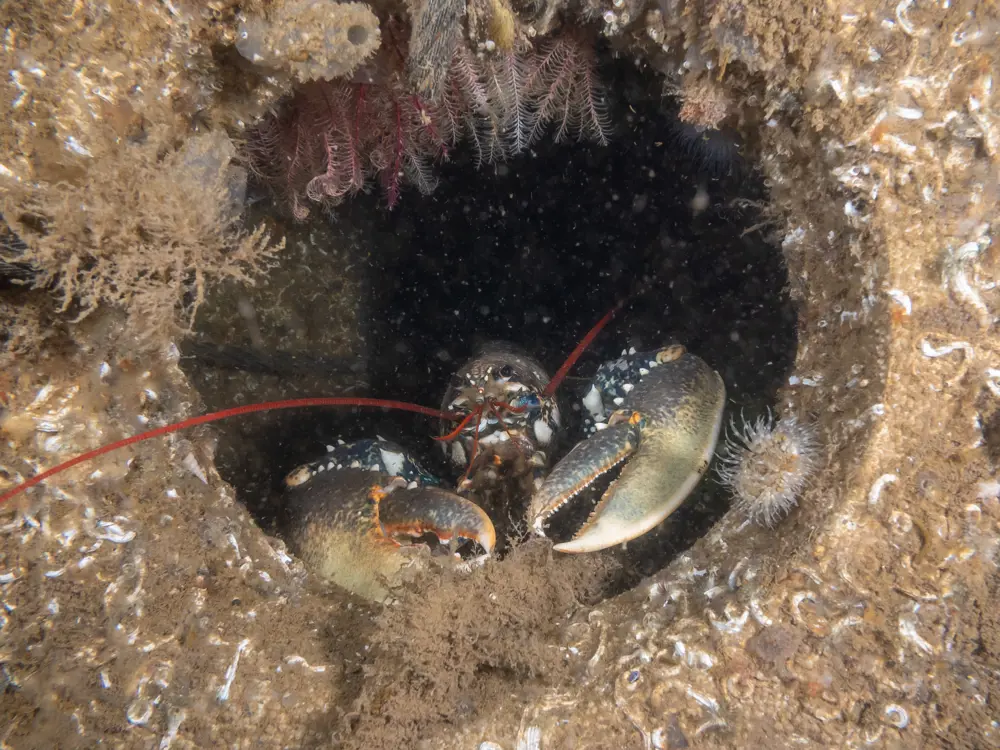
A lobster sheltering in the passageway of one of ARC Marine’s reef cubes® © ARC Marine
Promoting biodiversity was always a priority for ARC. ‘The main idea to incorporate into the design of an effective artificial reef is the complexity of the habitat,’ says Sam Hickling, the company’s Chief Scientific Officer. This complexity is increased by incorporating features such as grooves, pits, overhangs, ledges, and holes. Features are selected based on evidence for their ecological benefits, before being incorporated into ARC’s designs. “Our Marine Crete reef cubes® provide a wide variety of habitat niches, as opposed to reefs that use standard smooth concrete.”
Design features in hard structures can be as basic as “a central spherical chamber with a passageway on each side”. According to Hickling, studies show these increase the presence of organisms called suspension feeders, which filter out organic carbon and nutrient material from the plankton and particulate matter in the water. This may be because of the increased surface area for attachment it offers, or possibly shelter from predators. “It increases the ecosystem’s biodiversity and abundance,” he explains.
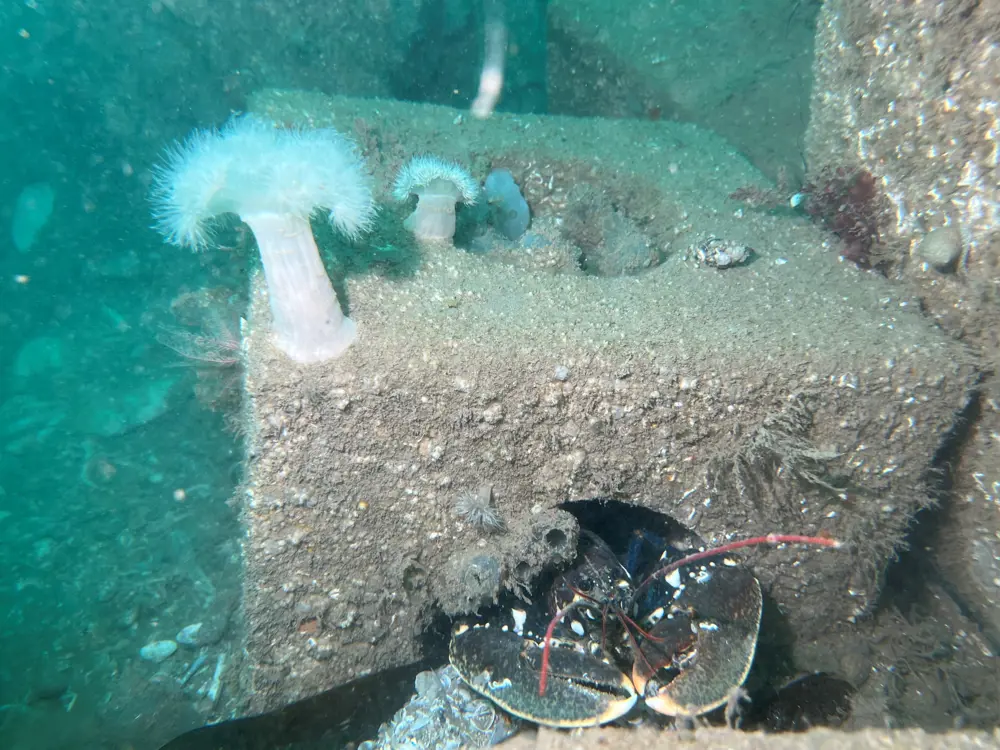
A lobster and a sponge living on one of ARC Marine’s reef cubes® © ARC Marine
Not your ordinary Portland cement
Harrison Short is ARC’s Project Engineer, looking at the operational aspects of deploying its unique solutions. When he joined the company, six months ago, it had already invented its Marine Crete, a secret mix with a compressive strength that achieves between 30 and 50 Newton compressive strength after 28 days – comparable to conventional concrete mixtures used in structural engineering. Short explains: “It is also more impervious to seawater than conventional concrete mixes using Portland cement and is therefore well suited for use in the marine environment.”
A lifecycle analysis of the cubes by an independent expert at the University of Plymouth calculated a 91% reduction in carbon emissions, compared to if they had been made from concrete containing ordinary Portland cement. “The analysis is based on the production of 1 tonne of concrete, in comparison with conventional Portland cement-based concretes,” explains Short. “This emissions value was based on a cradle-to-gate analysis of the product, including raw material production, transport and our entire manufacturing process – up until the point where the cast concrete unit leaves our yard.
“The 91% figure can vary slightly depending on the locality of the aggregates used in the mix. However, we always use locally sourced materials wherever possible. We’re working on our carbon neutral and carbon negative concrete ranges, including extra carbon sink material incorporated into our mix to offset the production process.” ARC Marine plans to have an updated analysis of Marine Crete undertaken in the next year or two, with the aim of proving carbon neutrality.
The company has installed more than 1,200 units in the UK and Europe, with another 6,000 units to come this year. Birbeck says: “We can construct reef cubes® en masse, but we can’t easily install them en masse. That’s our next challenge. We’re working out how we can integrate them into offshore construction vessels.” The company has an ongoing two-year project looking at exactly this.
Protecting green energy sources
Beyond coastal defence, ARC’s other clients include “anyone who puts a pipe or a cable in the seabed”. For instance, offshore wind power is a mainstay of the EU’s goal to be climate-neutral by 2050. The bloc has set a target for an installed capacity of 300 GW of offshore wind by 2050, while the UK aims to achieve 50 GW by 2030. Naturally, investment is flooding into offshore wind, with an estimated £60 billion going into offshore wind farm energy across the UK in the next five years.
As such, specialist structures are needed to protect subsea assets from harsh marine conditions and tidal scour – erosion at the seabed – which can damage subsea power cables and wind turbine foundations. Traditional equipment to protect subsea assets have high embodied CO2 emissions, damage the marine environment and shed plastics. Due in part to their plastic content, these structures have a limited lifespan and legislation requires them to be removed after a certain time. When removed, ecosystems that have grown around them are destroyed too.
ARC Marine products contain no plastic and are marine friendly, falling in line with rigorous Dutch leachate standards, meaning they can be left in place so the ecosystem can continue to thrive. Its product Marine Matt is used as scour protection and to protect subsea power cables on the seafloor. It is comparable to a conventional concrete mattress containing polypropylene rope, except it contains zero-plastic rope, instead. “So, if there is decommissioning, you don’t risk leaving plastics in situ,” adds Hickling.
Specialist structures are needed to protect subsea assets from harsh marine conditions and tidal scour – erosion at the seabed – which can damage subsea power cables and wind turbine foundations.
Surprisingly, offshore oil and gas platforms can make bountiful marine habits. Rigs, in place for decades, can be colonised by corals, with fish, starfish and mussels thriving in and around the steel pylons. Once a well is drained of fossil fuels and considered defunct, companies can seal it and simply remove the rig’s upper section, instead of removing the entire platform. Clearly, this benefits companies, with the potential to save millions in decommissioning costs – but some argue that leaving these structures, and their associated ecosystems, in place is better for biodiversity, too. In the Gulf of Mexico, the US programme Rig to Reefs has turned 532 oil and gas platforms into artificial reefs. Closer to home, UK researchers are planning to investigate the effect of oil rigs on sea life in the North Sea, to determine whether this approach is feasible.
ARC is inspired by the Hollandse Kust (West) offshore wind farm, 28 miles off the east coast of the Netherlands and due to be fully operational in 2023. It’s the world’s first offshore wind farm to make nature-inclusive design essential in a wind farm development. “If you look at their scoring criteria for the tender process, over half was on how [developers have] integrated nature-inclusive design to enhance ecosystems,” says Hickling. “Our hope is we can integrate or transfer that over to the UK.”
Just like biodiversity net gain on land (see ‘Engineering biodiversity’, Ingenia 91), legislation is changing for marine net gain: whatever you do in an offshore and coastal construction environment must improve the environment. When ARC launched, says Birbeck, they were “banging on people’s doors” to be heard. In the past two years there’s been a sea change (to excuse the pun). The world has opened up to the idea of ARS. Birbeck says: “We’ve raised £2.5 million in equity funding and will raise a further £5 million next year. Our turnover is increasing 100% year on year. So, it’s going well.”
***
This article has been adapted from "How artificial reefs boost biodiversity", which originally appeared in the print edition of Ingenia 94 (March 2023).
***
More on the story
🌊 Back to shore – how engineers are protecting against erosion from land
Contributors
Dr Will Bateman has a PhD in extreme ocean waves from Imperial College London and over 25 years of industrial experience for RMS and Lloyd’s Register. In 2012, he started working on the technologies that now form CCell.
Tom Birbeck founded ARC Marine in 2015 with a determination to repair the world’s damaged marine ecosystems. He has experience in commercial diving, aquaculture and sustainable fishing.
Sam Hickling is the Chief Scientific Officer at ARC Marine. His background is in zoology and oceanography. His favourite work activity is filming marine life with the company’s BlueROV2 and ROV pilot James Murphy.
Harrison Short is an engineer with experience in marine, civil and coastal engineering looking to develop artificial reefs across the globe with ARC Marine’s solutions.
Dr Tom Wilding is a marine ecologist, leading projects on underwater image analysis and investigating eDNA to evaluate change in the marine environment.
Keep up-to-date with Ingenia for free
SubscribeRelated content
Environment & sustainability

The extreme engineering behind life on an Antarctic station
Antarctica is one of the most challenging environments on the planet, but of enormous scientific importance to humanity. Technology and engineering is essential to enable the British Antarctic Survey's researchers to pursue their science effectively in this awe-inspiring landscape.
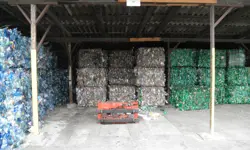
Recycling household waste
The percentage of waste recycled in the UK has risen rapidly over the past 20 years, thanks to breakthroughs in the way waste is processed. Find out about what happens to household waste and recent technological developments in the UK.

Upgrade existing buildings to reduce emissions
Much of the UK’s existing buildings predate modern energy standards. Patrick Bellew of Atelier Ten, a company that pioneered environmental innovations, suggests that a National Infrastructure Project is needed to tackle waste and inefficiency.
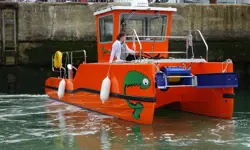
An appetite for oil
The Gobbler boat’s compact and lightweight dimensions coupled with complex oil-skimming technology provide a safer and more effective way of containing and cleaning up oil spills, both in harbour and at sea.
Other content from Ingenia
Quick read

- Environment & sustainability
- Opinion
A young engineer’s perspective on the good, the bad and the ugly of COP27

- Environment & sustainability
- Issue 95
How do we pay for net zero technologies?
Quick read

- Transport
- Mechanical
- How I got here
Electrifying trains and STEMAZING outreach

- Civil & structural
- Environment & sustainability
- Issue 95